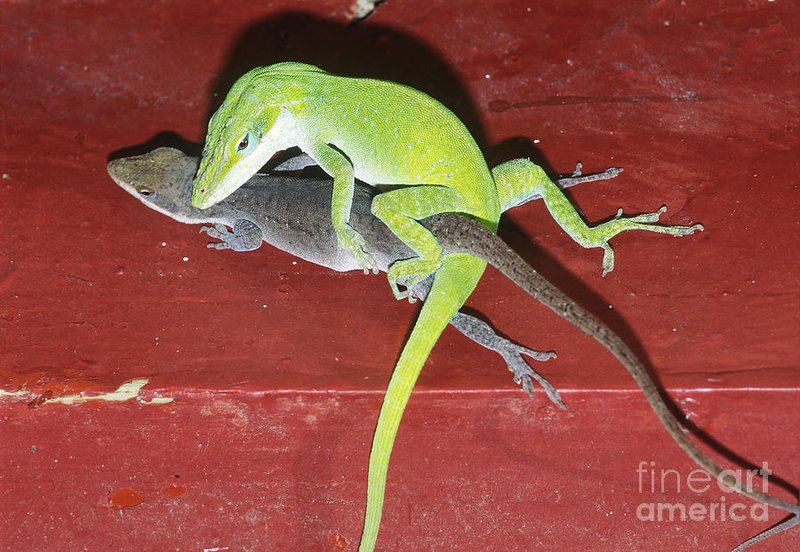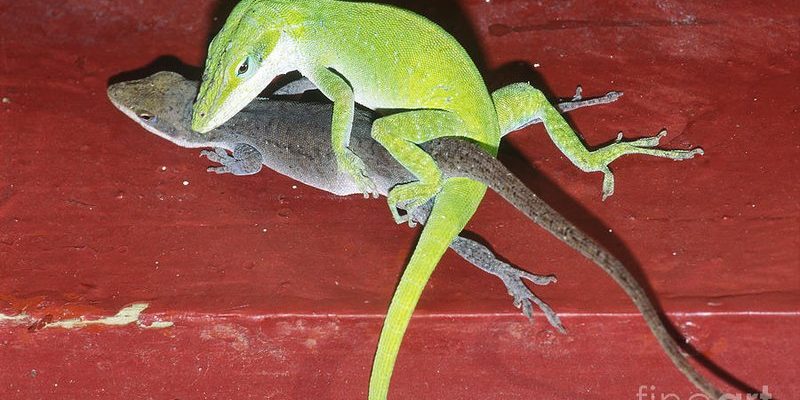
Lizards belong to a diverse group of reptiles that range from small, colorful anoles to large iguanas. They display a variety of behaviors and adaptations that help them survive and thrive in their environments. Whether you’re a curious animal lover or thinking about keeping lizards as pets, understanding their breeding habits is key to appreciating their role in the ecosystem. Let’s dive in!
Understanding Lizard Mating Seasons
Most lizard species have specific mating seasons that align with their environmental conditions. Generally, the warmer months are prime time for lizards to breed, as the increased temperatures help them stay active and find food more easily. Here’s the thing: during this time, you might notice changes in their behavior. Males often become more vibrant in color, which is a key signal to attract females.
Some lizards, like the common green iguana, are known for their elaborate courtship displays. Males will bob their heads and extend their dewlaps—those flaps of skin under the chin—trying to impress potential mates. This vibrant show isn’t just for show; it’s how they establish dominance and attract the right partner.
In contrast, other lizard species may have more subtle breeding behaviors. For instance, certain skinks might not engage in flashy performances, but they still communicate through scent marking and body language. It’s a reminder that nature’s variety is endlessly intriguing!
Types of Reproductive Strategies
Lizards exhibit various reproductive strategies, primarily divided into two categories: oviparous and viviparous. Oviparous lizards lay eggs, while viviparous ones give birth to live young. Let me explain further.
– Oviparous Lizard Breeding: Most lizards are oviparous. After mating, females lay eggs in safe locations, like under leaves or in soil. The eggs develop externally, and once they hatch, tiny lizards emerge that are often miniature versions of their parents. The number of eggs can vary widely—it might be just a handful for smaller species or several dozen for larger ones.
– Viviparous Lizard Breeding: Meanwhile, viviparous lizards provide more direct care to their developing young. Species like the common lizard give birth to live offspring, which can have advantages in certain environments. For instance, they bypass the risks associated with egg predation and ensure that their young are more developed at birth.
Understanding these strategies helps highlight how lizards adapt to their environments and ensure their species’ survival!
Mating Rituals and Courtship Displays
Lizard courtship isn’t just about finding a mate; it’s a complex dance of signals and displays. Males often perform elaborate rituals to draw attention. For instance, anoles engage in push-ups and dewlap extensions, signaling their fitness to potential partners. You might be wondering, why all the fuss?
These displays serve multiple purposes. They not only attract females but also ward off competing males. Think of it like a job interview where the most convincing candidate gets the position. The more impressive the display, the better the chances of mating success.
Another interesting facet is the pheromones lizards release during courtship. These chemical signals can convey a lot of information about their health and reproductive status. For example, a male that has fought off predators successfully will likely emit stronger pheromones, signaling his vitality to females.
Understanding these mating rituals provides insight into why some species thrive better in specific environments than others.
Gestation and Egg-Laying
Once mating occurs, the next phase is critical: gestation or egg-laying. This phase can vary in length from a few weeks to several months, depending on the species and environmental conditions. For oviparous lizards, the timing of egg-laying can be crucial. It often aligns with the best conditions for hatching.
Females will often seek out suitable nesting sites, which are essential for the protection of their eggs. For example, a female may dig a hole in sandy soil or find a safe spot under a rock. This choice can determine whether the eggs thrive or fall victim to predators.
Once the eggs are laid, the mother may leave them to develop independently, or in some species, she may exhibit protective behaviors to ensure their safety. This maternal instinct highlights the diversity of reproductive strategies and the lengths mothers will go to ensure their offspring’s survival.
Hatching and Early Life Stages
After a period of incubation, it’s time for the eggs to hatch! This moment is often a dramatic affair. Hatchlings usually break through their eggs using a specialized structure called an egg tooth. Once free, they are often independent from the get-go, requiring little to no parental care.
The first few days are crucial for these tiny lizards. They must quickly find food and shelter to survive. Many species hatch with an abundance of natural instincts, allowing them to navigate their environment effectively. For instance, a baby gecko will instinctively start hunting small insects almost immediately after hatching.
However, young lizards must also be wary of predators, making their early life stages fraught with challenges. It’s a tough world out there, but it’s the way nature ensures that only the fittest survive to adulthood.
Factors Affecting Reproductive Success
Several factors can impact the reproductive success of lizards. Environmental conditions, like temperature and humidity, play a significant role. For instance, if it’s too cold, eggs may not develop properly, while excessive heat can lead to high mortality rates among hatchlings.
Predation is another crucial factor. Many lizard species suffer significant losses at the egg stage. Birds, snakes, and even other lizards can pose threats to nests. The choice of nesting sites and the timing of egg-laying are strategies that help mitigate these risks.
Additionally, competition among males can impact reproductive success. Males with the most striking displays or physical traits are often more successful at attracting mates. This competitive nature drives species to evolve unique traits, ensuring that the strongest genes are passed on.
In essence, it’s a complex game of survival, adaptation, and continuous evolution that shapes lizard populations over generations.
Breeding and reproductive behavior in lizards is a fascinating world filled with unique challenges and strategies. From the vibrant courtship displays to the struggles of hatchlings, every phase reveals the incredible adaptability of these reptiles.
Understanding how lizards reproduce not only enriches your knowledge as an animal lover but also highlights the delicate balance of nature. So, whether you’re watching your pet lizard or exploring the wild, remember that each little display and every hatchling’s journey carries the weight of survival and the promise of future generations.
Embracing this understanding helps us appreciate the rich tapestry of life that lizards contribute to our ecosystems, making them even more remarkable creatures!

